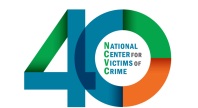Media Ethics and 'True Crime'
NCVC’s media guides
The glare of media is sometimes unavoidable for victims and survivors of crime. Whether it’s breaking news coverage of violence, inquiries for interviews for “crime trend” stories, or investigative “true crime” stories told years later, it’s clear that nothing is truly off limits for journalists and content creators. Some of them do mean well, and occasionally, victims and their advocates can harness media to create a positive impact.
Yet, too often, the results of media coverage — be it news stories, podcasts, or documentaries — wind up retraumatizing survivors and victims’ loved ones instead of helping them. Victims are not characters in stories who exist to boost ratings; they’re people in various stages of trauma and healing journeys.
Below, you’ll find three guides created by the National Center for Victims of Crime. The first two are media guides one designed to help content creators (journalists, podcasters, and documentarians) do their work ethically and in ways that minimize harm and the other to help survivors and victim advocates navigate media coverage. The third guide is a primer on how to consume so-called “true crime” content ethically.
About these guides: In 2023 and 2024, the National Center for Victims of Crime created these two guides with the input of NCVC staff, crime survivors and advocates who have experience dealing with media coverage, and responsible journalists.
NCVC originally created a guide for crime victims and media in the 1990s. Our team felt new guides were needed to reflect the modern era of social media and society’s fascination with “true crime” content. We hope that victims and their advocates, first and foremost, find these guides (complete with tip sheets) informative and helpful when facing media pressure. And just as important, we hope journalists and content creators can learn from these documents and implement practices that reduce harm and involve victims in their work. We believe this type of collaborative storytelling will create better — and more responsible — products.
We will update these documents as needed because the media landscape is always changing.
Please feel free to reach out to media@victimsofcrime.org with any questions.
‘True crime’ guidance
There is no victimless crime.
That’s something “true crime” consumers should keep in mind when seeking out television, podcasts, and other “content” about crime. Even decades later, victims, survivors, and family members are still impacted by traumatic events. Thoughtless content can harm them — no matter how long it’s been since the crime. And unfortunately, much of the true crime content that’s available serves primarily to enrich “creators” instead of providing closure to people actually affected by crime.
At NCVC, we know that the true crime genre is here to stay. That’s why we’re encouraging people who want to engage with such content to do so ethically, and only consume content that causes the least amount of harm to victims and their families.
Here are eight simple rules for being an ethical true crime consumer.
Related videos
Watch our “8 Simple Rules for Being an Ethical True Crime Consumer” panel discussion at CrimeCon 2023 below.
In May 2025, National Center for Victims of Crime CEO Renée Williams joined NCVC board member Kim Goldman and victim advocate Nela Kalpic to discuss how victims of crime can use our guide for navigating the media spotlight. You can watch the discussion, which was presented jointly with our friends at the National Resource Center on Domestic Violence, below.
In December 2024, National Center for Victims of Crime CEO Renée Williams participated in a panel discussion about true crime and media ethics on NPR station WFAE. You can listen to the discussion here or watch the recording below.
NCVC held a keynote panel at its 2024 National Training Institute focused on media bias in crime coverage, especially as it relates to the lack of reporting about victims of color. We hosted representatives from Black and Missing Inc. and the Gabby Petito Foundation for this important discussion. We’re pleased to offer a recording of it here, free of charge. Watch “Until Every Voice is Heard: The harm of biased media coverage and how to advocate for representation” below.

